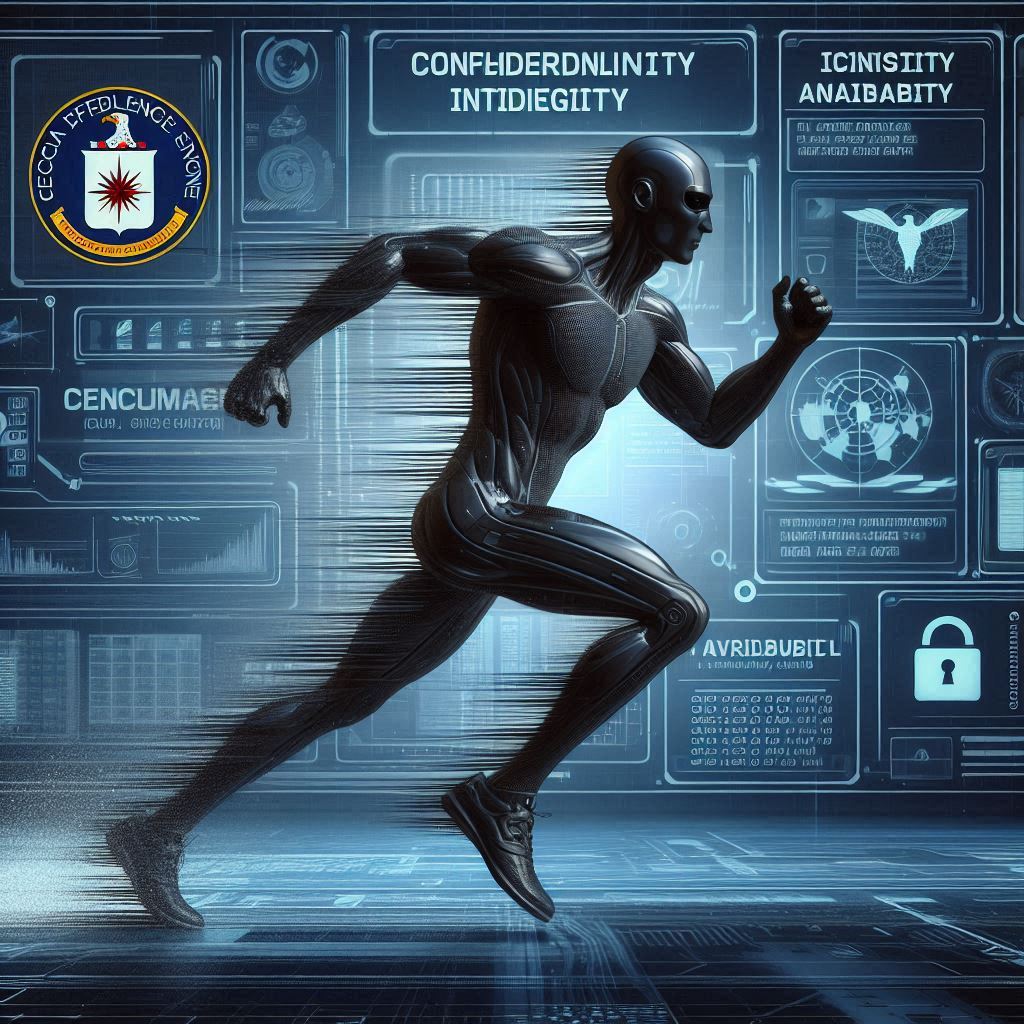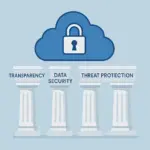When we talk about IT security, everything revolves around three crucial letters: C, I, A. No, the CIA hasn’t crept into the world of bits and bytes – here “CIA” stands for the three major protection goals of IT security: Confidentiality, Integrity and Availability. Together, these objectives form the CIA triad, the heart of every security strategy. But what exactly is behind them and how can they be applied in practice? Let’s dive in!
What is the CIA triad and why is it important?

Imagine you are the guardian of a vault that contains countless valuable data – from business data to your customers’ personal information. To make sure no one steals or messes with your treasure, you need three main goals:
- Confidentiality: only the right people should have access to the data. If you keep a diary, you don’t want half the city to read it.
- Integrity: Your data should remain clean and unchanged, like a good recipe. A splash of ketchup in your dessert? No, thank you!
- Availability: Your systems should be accessible when they are needed. After all, it’s no good if your safe is uncrackable but constantly closed!
The CIA triad model helps to set up security strategies simply and effectively. Regardless of whether you run a small online store or monitor the IT security of a large corporation – the CIA triad provides you with a solid foundation.
Examples showing the CIA triad in action

Here are a few real-life examples so that the whole thing doesn’t just remain theoretical:
Confidentiality – protection from prying eyes
Imagine if your online banking was unencrypted – anyone who wanted to could track your account movements! This is exactly what happened at Facebook in 2019, when the data of over 500 million users was made publicly accessible. One lapse in access controls and bang – a data leak that could have been prevented.
Or take the healthcare sector. Here, data protection laws such as HIPAA (in the USA) have strict guidelines to ensure that patient data is only accessible to medical personnel. Without these rules, sensitive information would fall into the hands of the wrong people, and a hospital would hardly be trustworthy.
Integrity – data you can rely on
Data without integrity is like a dish that is constantly being changed according to the taste of the chef. Imagine a bank transmitting a transfer without integrity and a transposed number suddenly turns 10 euros into 10,000 euros – that could be expensive! Banks therefore use hashing to provide each transfer with a unique fingerprint, which is immediately noticeable if something is wrong.
Integrity is also an absolute must in blockchain technology, such as cryptocurrencies. Each transaction is cryptographically linked to the previous ones so that manipulations are immediately visible. This keeps the blockchain tamper-proof and reliable.
Availability – No excuses, always ready for use!
Imagine if your favorite online store was constantly offline. That would be frustrating, wouldn’t it? In 2018, it hit GitHub – they fell victim to a massive DDoS (Distributed Denial of Service) attack that briefly paralyzed the service. Although they were able to recover quickly, this example shows how important redundancy and emergency planning are.
Availability is particularly crucial for critical infrastructures such as power grids or hospitals. They use redundant systems and emergency power generators to ensure that everything stays up and running even in the event of a technical failure. After all, it can be a matter of life and death in these areas.
The CIA triad in security risk analysis

You’ve understood the basics and seen a few examples. But how do you use the CIA triad in a security analysis? There are five steps:
1. what is worth protecting? – Identify the protection goals
First, you analyze which data or systems are particularly worth protecting. Each target is evaluated according to the three attributes of the CIA triad:
- Confidentiality: Who is allowed to access it? Customer data, for example, is highly sensitive.
- Integrity: How important is it that this data remains unchanged? Accounting data is particularly critical here.
- Availability: How important is constant accessibility? Some systems simply have to be available at all times.
2. Where are the dangers lurking? – Threat analysis and vulnerability assessment
Now think about which threats could jeopardize the respective protection goal:
- Confidentiality: Threats could be phishing, insider threats or eavesdropping attempts.
- Integrity: There is a risk of manipulation by hackers or malicious software.
- Availability: Risks could include DDoS attacks, hardware failures or natural disasters.
Vulnerability analyses reveal where your systems are susceptible. For example, an unencrypted network would be a risk to confidentiality, while outdated servers would be prone to outages.
3. how bad is it? – Risk assessment
The next step is to assess the risks. This involves estimating the probability of an attack and its consequences. Here, the CIA triad helps to clearly differentiate the impact of an incident:
- Loss of confidentiality: A data leak could be expensive, financially and for your image.
- Loss of integrity: Manipulated data could steer important decisions in the wrong direction.
- Loss of availability: Downtime could mean lost sales and frustrated customers.
Each risk is given a rating (e.g. “high”, “medium”, “low”) in order to set priorities.
4. what do we do about it? – Action planning and prioritization
Now comes the countermeasures. You plan specific security measures for each risk you have identified:
- Confidentiality: Stronger access rights and encryption help to prevent data leaks.
- Integrity: Checksums and digital signatures ensure the authenticity and immutability of data.
- Availability: Redundant systems and regular backups ensure availability.
As resources are often limited, the measure with the highest priority is implemented first. An emergency system for critical data has priority over less sensitive areas.
5. is everything running smoothly? – Monitoring and adaptation
The final step is to continuously review the measures taken. The IT world is dynamic and threats are constantly changing. Here too, the CIA triad serves as a guideline for monitoring the most important protection goals and adapting measures.
Summary
The CIA triad is like a security foundation on which all other measures are built. With a clever combination of confidentiality, integrity and availability, you can create a stable security network that is prepared for threats. Whether hackers, hardware errors or software vulnerabilities – with the CIA triad, you are equipped to protect your data and systems in the best possible way.






